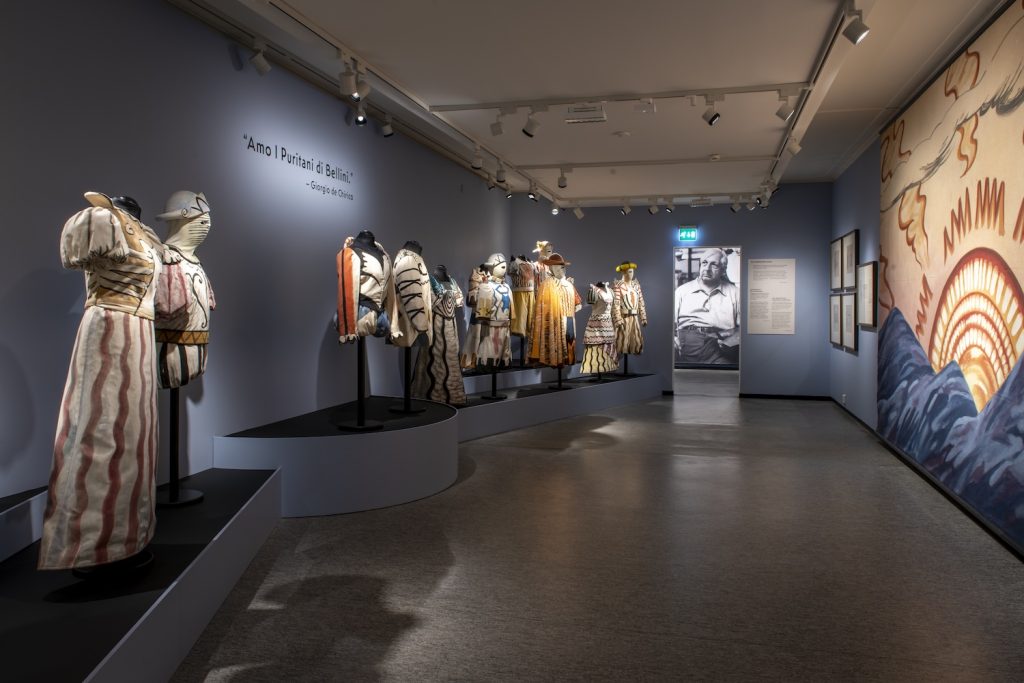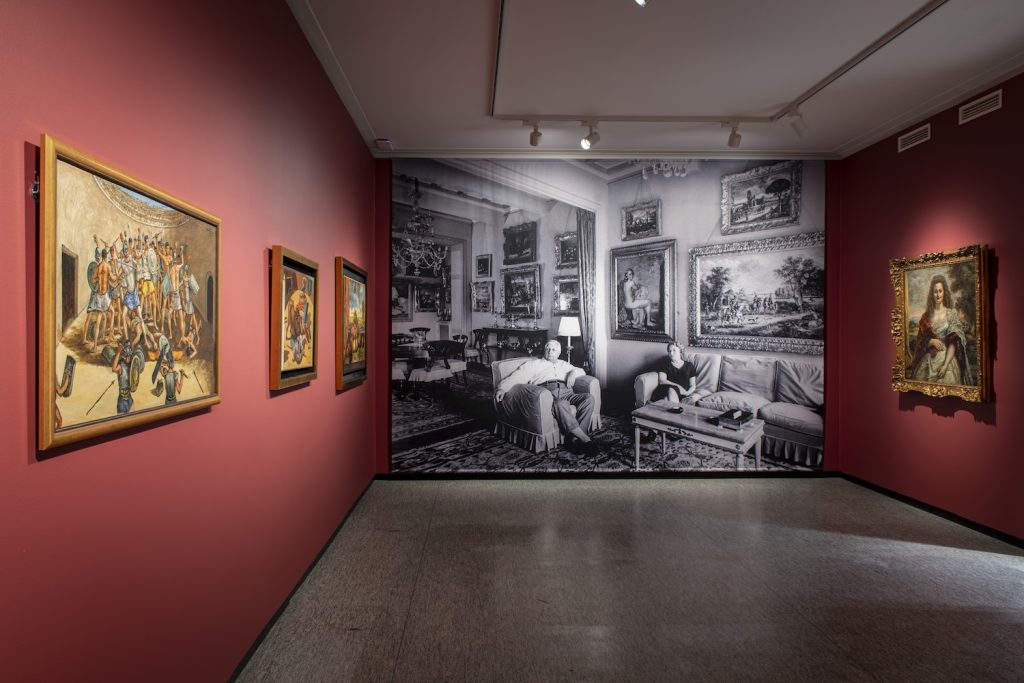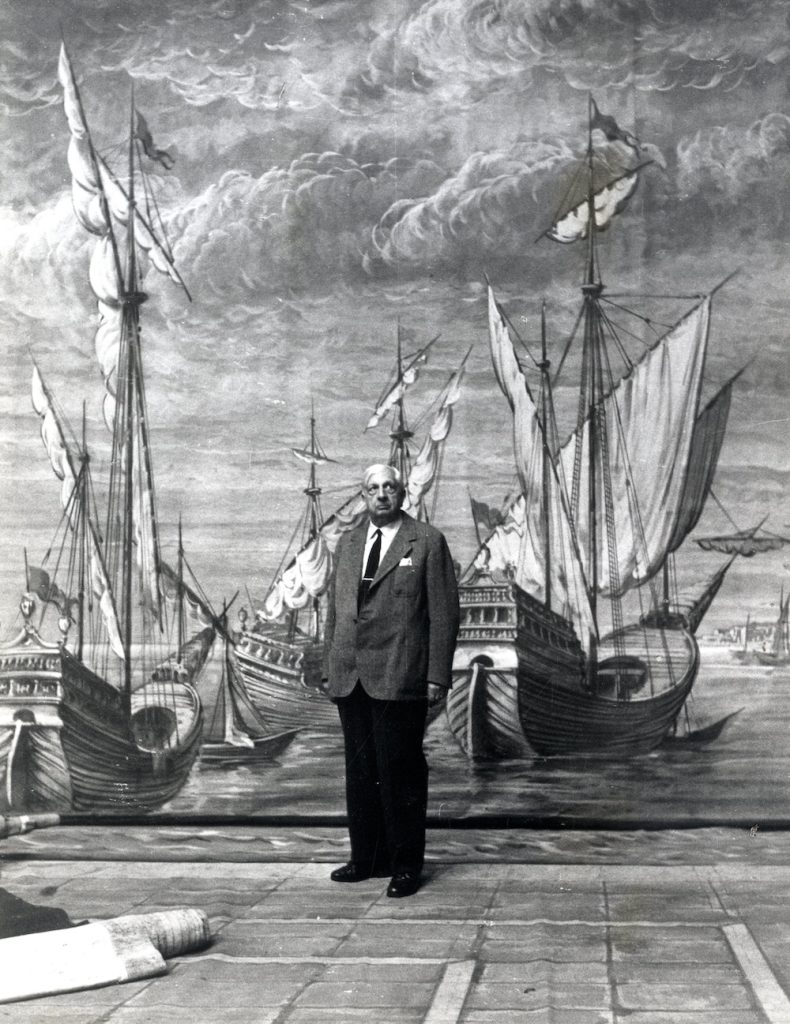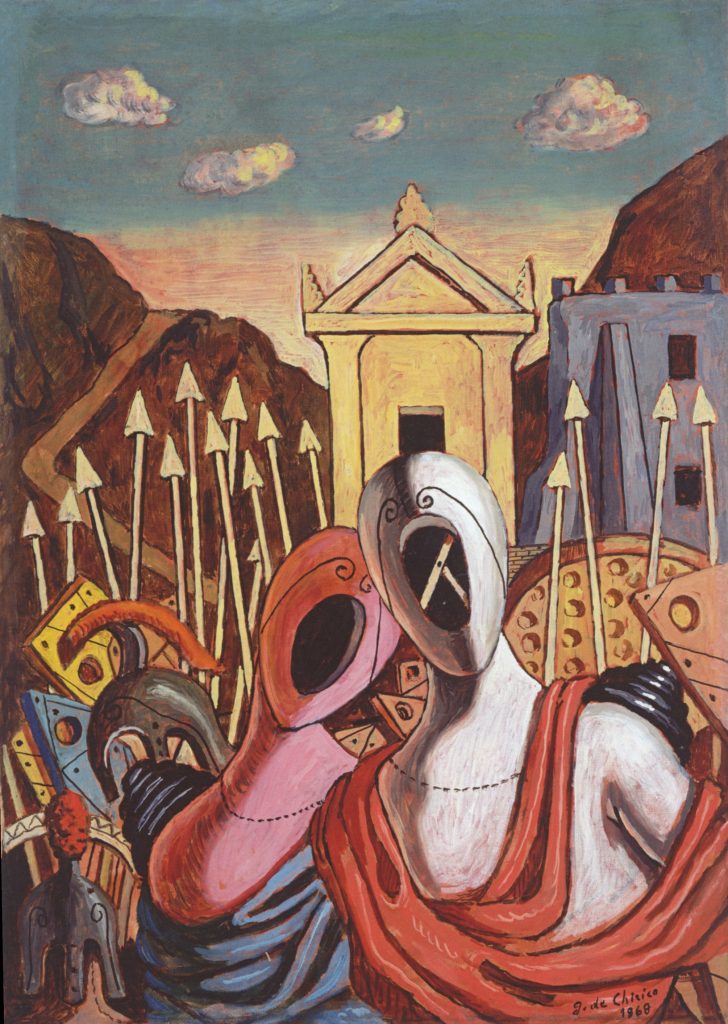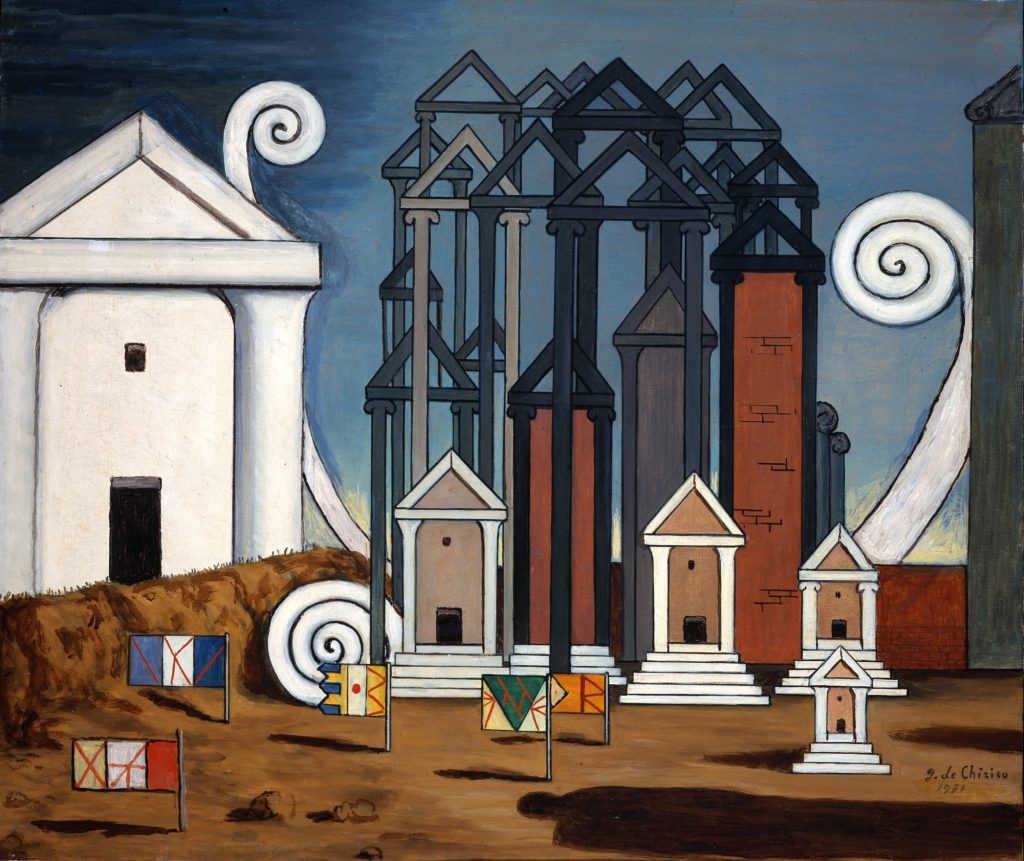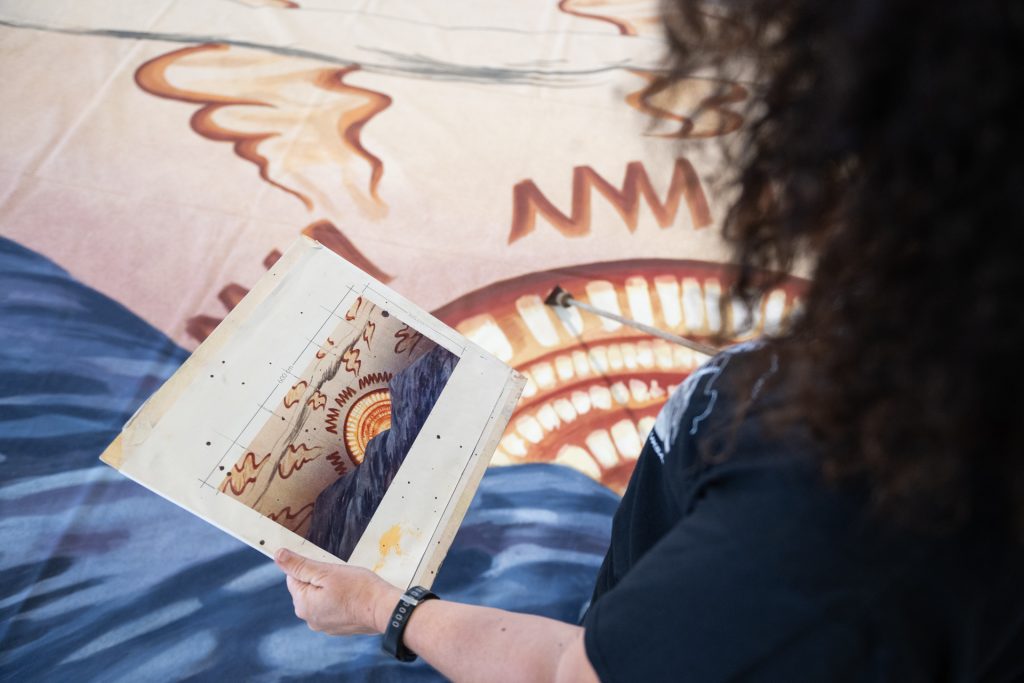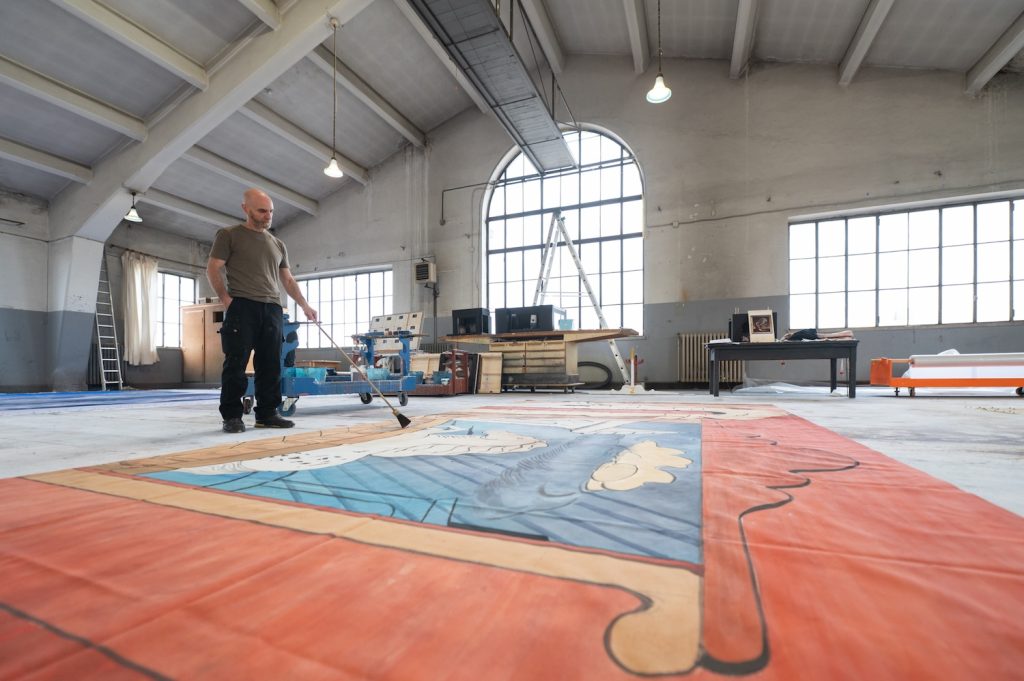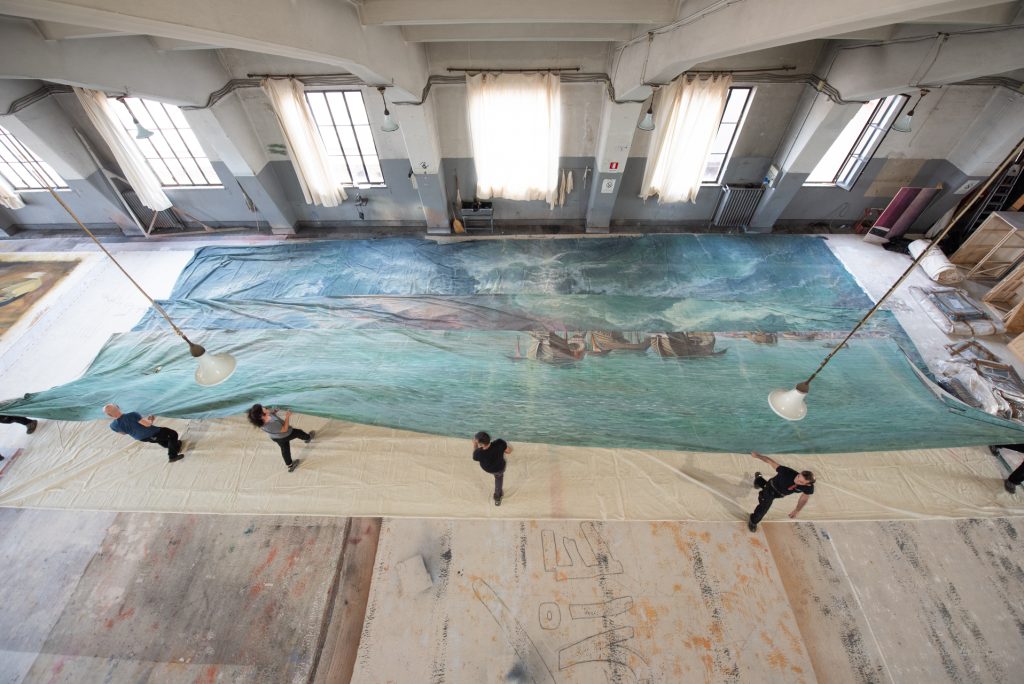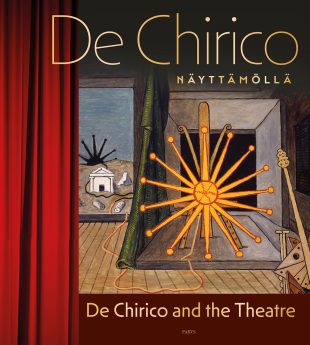Serlachius, Mänttä f
15 March to 17 August 2025
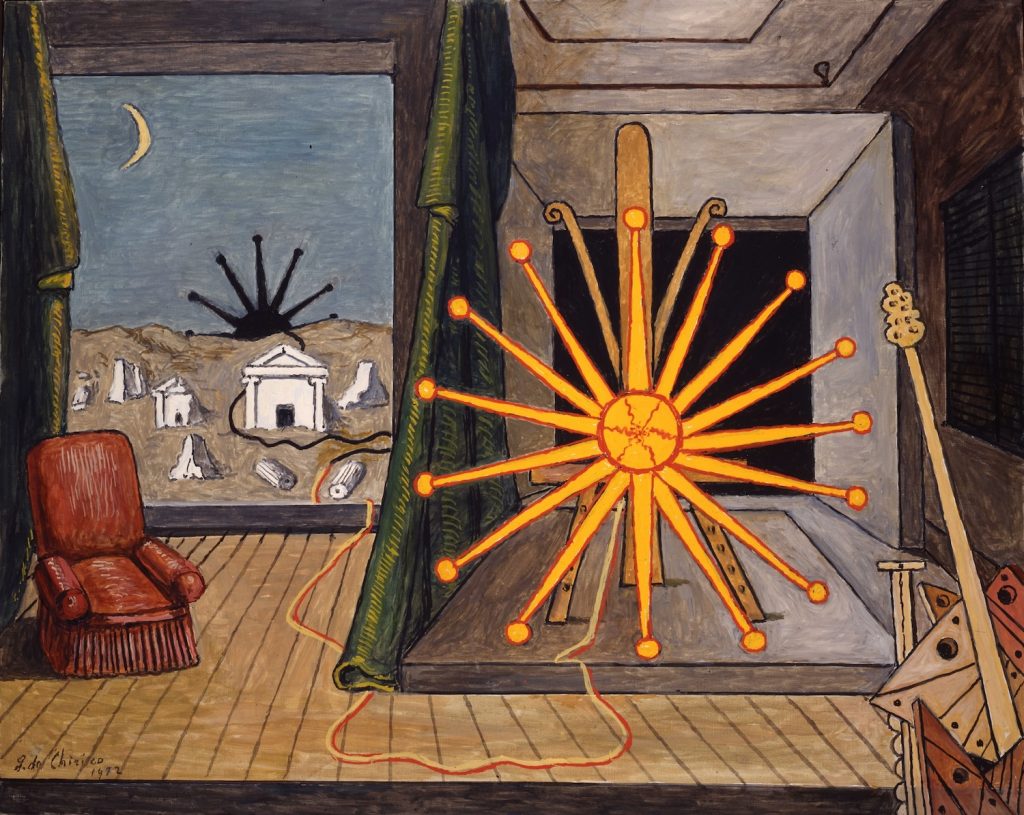
A creator of metaphysical art, Giorgio de Chirico’s work in the field of stage design and his relationship with the city of Rome take centre stage in the exhibition De Chirico and the Theatre, on display at Serlachius from 15 March to 17 August 2025. This is the first time the artist’s work is presented so extensively in Finland.
Italian artist Giorgio de Chirico (1888–1978) is known for creating the metaphysical art movement in the 1910s. His paintings depict bizarre spaces and landscapes where architectural elements and perspectives create a dreamlike atmosphere. De Chirico is considered one of the most significant innovators in 20th-century painting.
The exhibition at Serlachius showcases de Chirico’s set and costume designs for the Rome Opera, as well as finished sets and costumes. There are also many of his paintings and drawings from the Foundation Giorgio and Isa de Chirico, including works that have never been publicly displayed before.
The exhibition is curated by artist Hannu Palosuo, Opera Stage Director Italo Nunziata, who has worked at the Rome Opera, and curator Cornelia Bujin. Their direct contacts with Rome’s art institutions and unique perspective on de Chirico’s art have contributed to bringing the exhibition to Serlachius.
A great lover of opera
De Chirico loved opera and designed sets and costumes for dozens of productions. He was a prolific writer and often used expressions related to stage art, such as “we step onto the stage of art” or “the sky like a curtain.” The artist’s personal relationship with opera and art in general is conveyed to visitors through the exhibition’s wall texts.
The exhibition features two productions seen at the Rome Opera: Rossini’s Otello and Vincenzo Bellini’s The Puritans, originally created for the Florence Opera but also performed in Rome. The third production in the exhibition is Vittorio Rieti’s ballet Le Bal, originally created for the Monte Carlo Opera but later seen in Rome.
De Chirico’s set design for The Puritans caused a huge scandal in 1933, significantly changing the role of set design in opera. De Chirico had adopted from the Ballets Russes the Parisian method of integrating set and costume design as an integral part of the opera’s text and choreography. The Florence Opera audience was not yet ready for this approach.
De Chirico did not paint the sets he designed; skilled set painters did. The sets for the exhibition have as well been painted at the Rome Opera based on the artist’s sketches and using old techniques. Costumes made for the productions and outfits de Chirico borrowed for his grand parties will also be on loan from the opera.
Paintings from the later career
The exhibition features numerous paintings, drawings, and sketches from the Foundation Giorgio and Isa de Chirico. One room recreates the atmosphere of his studio home in Rome. There are drawings that have never been publicly displayed before, which the artist drew while sitting in the opera, observing the audience and the stage.
The paintings on display are mostly from the latter part of his career when he returned to the metaphysical and baroque themes of his youth, creating more refined art. The exhibition also tells the story of de Chirico’s relationship with Rome.
The exhibition will be on display at Serlachius Headquarters in Mänttä from 15 March to 17 August 2025. It is organised in collaboration with the Fondazione Giorgio e Isa de Chirico, Teatro dell’Opera di Roma, Maggio Musicale Fiorentino, and Fondazione Cerratelli.
Images

